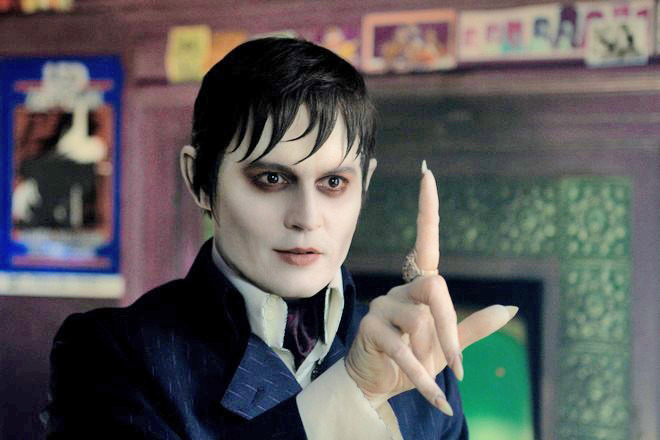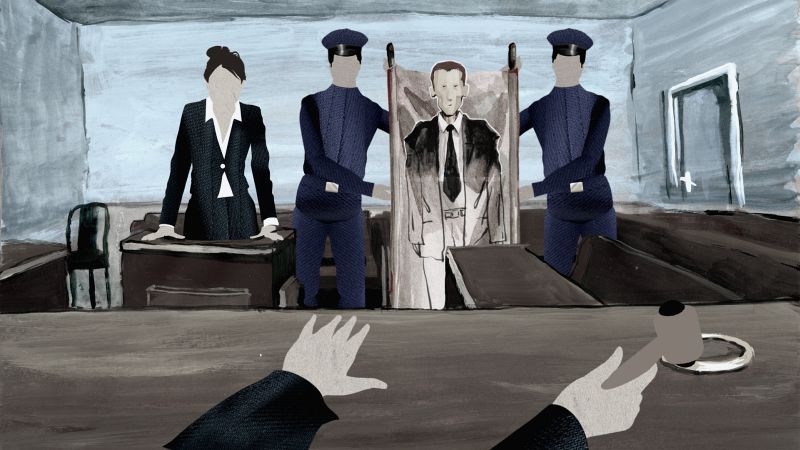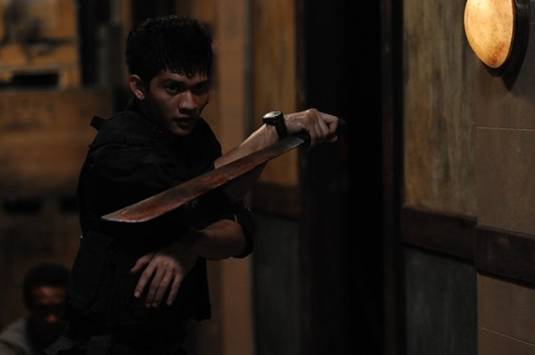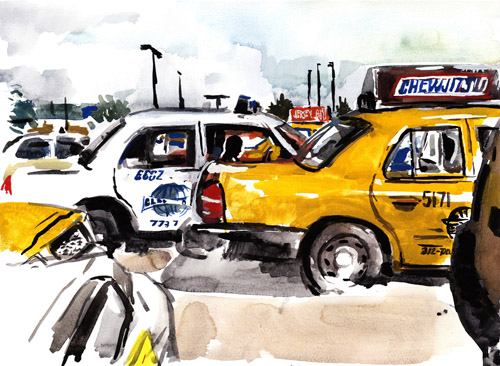Tim Burton is little more than a soulless businessman who makes movies as cutting-edge as crucible steel. His films haven’t been fun or worthwhile in quite some time, an especially astonishing accomplishment considering the eye-popping work that came before. He’s been lurching around like a creatively bankrupt whore for at least sixteen years and his chief skill seems to be taking very fun films from decades past (Planet of the Apes, Willy Wonka & the Chocolate Factory, et al.) and adulterating them into tepid remakes which rival Sátántangó in sheer soporificity. Tim Burton is not a man who dazzles, but he is very keen on taking your money and boring you to tears.
With his latest disaster, Dark Shadows, Burton has once again butchered an engaging antecedent. He has hired Seth Grahame-Smith, an in-it-for-the-money mashup charlatan who wasn’t even alive when the first Dark Shadows series aired, to write a porous screenplay built upon gags so bad that even a Marmaduke fan is likely to go postal.
Instead of establishing Barnabas Collins’s striking qualities as a tormented vampire, Burton and Grahame-Smith cheapen him by having Barnabas react to cultural developments (“They tried stoning me. It did not work,” replies Barnabas when someone asks if he is stoned: no one in the theater laughed), having Dr. Julia Hoffman (played here as a clueless chain-smoking drunk by Helena Bonham Carter) go down on Barnabas because Burton and Grahame-Smith couldn’t ken the character (played by Burton’s real-life wife!) in any other way*, and having Barnabas quote from The Steve Miller Band’s “The Joker” (which actually came out in 1973, one year after the movie’s setting) and Erich Segal’s Love Story in an effort to relate to hippies.
This is Dark Shadows‘s idea of character development, and it extends to the acting. A distressingly plastic Michelle Pfeiffer, unable to express anything with her face, resorts to eye blinking in her role as the Collins matriarch (and cannot compare to the classy Joan Bennett from the original). For some inexplicable reason, Burton has directed nearly every woman to talk with a gravely two-packs-a-day timbre. And this became so distracting that I had to do a double take to make sure that Eva Green (who plays Angelique, the witch who ensnares Barnabas) wasn’t Helena Bonham Carter. Bella Heathcote tries her best (and is an excellent Kathryn Leigh Scott mimic) as Victoria Winters, the woman who looks like Barnabas’s lost love, Josette du Pres. But with such a middling script (and a really awkward backstory about being institutionalized as a child reflecting the desperation of artistic cretins sandwiching Maggie Evans and Victoria Winters into one character), Heathcote’s talents fizzle before they are allowed to catch fire. As for Johnny Depp, he’s in full paycheck role somnambulism here, offering little more than a not particularly precise Liverpudlian dialect and spastic presence. It is now clear that Johnny Depp, who was once one of our more interesting and daring actors, can no longer be trusted to put his name to anything even remotely daring. (His next film is The Lone Ranger.)
And I put forth to any self-respecting moviegoer that when a character is forced to exclaim “You’re way too weird!” to another in a movie, as one does to Barnabas, this is probably happening because the writer and the director are incapable of establishing the weirdness through action.
The Jonathan Frid and Ben Cross incarnations of Barnabas Collins didn’t require external prodding from others to establish their on-screen gravitas. Producer Dan Curtis, faced with a miniscule budget for his daily soap opera, relied on two dependable qualities that have escaped Burton’s feeble attentions: (1) go-for-broke writing and (2) theatrical acting. So he had his writers scavenge ideas and narrative angles from Poe, Lovecraft, Wilde, Stoker, Shelley, and countless other classics to create what was surely one of the most ambitious and quirky daytime shows ever produced on television, including everything from vampires to werewolves to gripping court trials to a wealthy family to parallel universes to immortal figures to Gothic intrigue. It proved so strangely addictive — almost the American answer to old school Doctor Who‘s endearing combination of wobbly sets and high concept — that I ended up renting the first 52 volumes on VHS at a Sacramento video store around 1990, managing to hook a number of friends and family members into my surprise find, and was crushed when I learned that there was no 53rd volume. (Later, I discovered that the Sci-Fi Channel was broadcasting Dark Shadows every morning, and I waited patiently for the series to catch up to where I had left off.)
So if you’re going to compress a series this complicated and this distinct into a two hour movie, you need dedication and finesse, especially if you hope to attract a new audience.
But Burton and Grahame-Smith are so laughably amateurish that Barnabas walks around town in open daylight with little more than a hat and an umbrella to protect him. (Indeed, after the fifteenth time I noticed some stream of sunlight that should have killed Barnabas, I stopped counting.) And unlike the Frid or Cross exemplars, who both used their innate charisma to persuade, Barnabas relies mostly on his hypnotic powers to coax others to do his bidding. As the wonderful bar scene from Near Dark demonstrated, a vampire is only as badass as his actions. Tim Burton’s Barnabas comes from a soft, privileged, and unlived place.
In addition, the movie is needlessly aggressive in its use of obvious music cues — The Carpenters’s “Top of the World,” The Moody Blues’s “Nights in White Satin,” Barry White’s “You’re the First, My Last, My Everything,” many others — to telegraph its hackneyed moments. One almost expects Casey Kasem to show up. Instead, we get Alice Cooper performing at Collinwood, the Collins family manse that was so enticingly mysterious in its two television incarnations. For Burton, Collinwood is merely a place where you stash your badminton and macramé supplies in the secret rooms.
If turning a secret room into storage space for a Veblenian haul is Burton’s idea of imagination, then it’s clear that this rabid bore should be taken to the woodshed. The man contributes nothing of value to the American cultural landscape. He may look like Ichabod Crane, but he lost his head for fun a long, long time ago.
* — To give you a sense of how Burton and Grahame-Smith have diminished Dr. Julia Hoffman, here’s an extremely abbreviated character history from the original series. She was the head of a sanitarium, pretended to be a historian to infiltrate her way into the Collins family, and discovered Barnabas to be a vampire through her own initiative. Barnabas and Julia developed an interesting relationship that was built on trust, hypnosis, blackmail, and near murder. Should such an intriguing character really be little more than a drunk?




